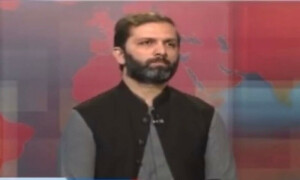Punjab is in the middle of its annual canal de-silting campaign, which, if seen in the context of its targets and the budgetary allocations, hardly inspires confidence. According to the provincial target, the campaign would clear some 1,515 canal miles (each canal mile being 5,000 feet long), which is less than six per cent of the total length of canals under the department.
Punjab has allocated only Rs90 million for it. In fact, poor allocation have set a meagre target. Historically, the province covered 20 per cent canal length because, in engineering terms, it is necessary to de-silt each watercourse every five years to restore it to its original design capacity, and ensure irrigational efficiency.
However, for the last few years, the province has restricted its targets to cover only six per cent of the system.
Slowly, the system is losing its efficiency as maintenance is lagging far behind the requirement. If the policy continues for the next few years, the system, experts believe, would be heading for collapse. With climate effect reducing national water supplies, instead of keeping the system more efficient to take water to the fields, the under maintained system is becoming part of the problem and worsening water crisis.
The provincial irrigation network suffers billions of rupees of loss each year, which the Punjab government foots through budgetary funding. The provincial government is not rationalizing water rates, which literally have become absurd. Raising these rates involves some political risk, which provincial government is not ready to take. So, the provincial government creates a vicious cycle, impacting adversely both on water rates and efficiency. It does not get money because gap between its income and expenditures is increasing, which the provincial government is not ready to pay fully. With income going down every year, it has no money to invest on the system and keep it efficient, some say even intact.
Punjab’s water pricing defies all logics. At the turn of the century, it introduced a flat rate system, charging Rs135 per acre (abbiyana) annually. The charges apply (on perennial system) for water supply for 48 weeks – out of 52 weeks a year ( canals remain close for a month), as they now are – almost Rs2.79 per week.
Comparing it with alternative sources of water supplies exposes the absurdity of current rates. If a farmer runs his tubewell on diesel, it costs him over Rs3,000 per watering. On electricity, which is simply not available any more in the rural areas, the cost is around Rs500 for each watering. It is not to suggest that farmers be charged at the highest rates but only to underline the irrationality of the current pricing system.
This flat rate system also defies water consumption logic. It charges same amount of money for watering cane as that of cotton, or the same money for maize or rice. The requirement for water for all the crops differs by almost ten times. Take the price of agricultural commodities that have skyrocketed in the last decade or so. When these rates were implemented, wheat used to cost Rs300 per 40Kg, which has now gone beyond Rs1500 for the same quantity. An acre of Kinnow orchards used to sell for Rs50,000 and now brings four times that amount. Thus, water rates should be rationalised accordingly.
The water subsidy also has a hidden cost. It breeds a culture of dependence and inefficiency. The Punjab irrigation department officials know that the gap between income and expenditure has to be filled by the regular handouts from the Finance Department – regardless how wide or narrow it is – or the Punjab government would pay through budget. A recent report by the Planning Commission pointed out that all provinces recover only 24 per cent operation and maintenance (O&M) cost, with rest 76 per cent coming in form of subsidies.
While keeping water dirt cheap, Punjab also loses control over the demand side management and cropping pattern. For the last one decade, it has been trying to promote high efficiency sprinkle and drip irrigation system and investing heavily on them, without any notable success. All such systems don’t make commercial sense to the farmers with canal water being so cheap and delivered at the farm with all losses going to the government.
It is time for the Punjab government to revisit its policies to improve the efficiency of the irrigation system by rationalising the water rates.













































Dear visitor, the comments section is undergoing an overhaul and will return soon.